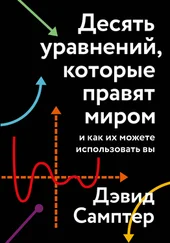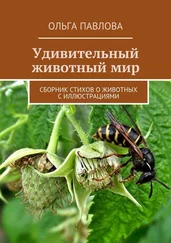Santosh, M., Arai, T., & Maruyama, S. (2017). ‘Hadean Earth and primordial continents: the cradle of prebiotic life’, Geoscience Frontiers, 8 (2). P. 309–327.
Dodd, M. S., Papineau, D., Grenne, T., Slack, J. F., Rittner, M., Pirajno, F., … & Little, C. T. (2017). ‘Evidence for early life in earth’s oldest hydrothermal vent precipitates’, Nature, 543 (7643). P. 60–64.
Adler, J. (1976). ‘The sensing of chemicals by bacteria’, Scientific American, 234 (4). P. 40–47.
Blakemore, R. (1975). ‘Magnetotactic bacteria’, Science, 190 (4212). P. 377–379.
Choanoflagellata.
Kirkegaard, J. B., Bouillant, A., Marron, A. O., Leptos, K. C., & Goldstein, R. E. (2016). ‘Aerotaxis in the closest relatives of animals’, eLife, 5, e18109.
Reid, C. R., Latty, T., Dussutour, A., & Beekman, M. (2012). ‘Slime mold uses an externalized spatial «memory» to navigate in complex environments’, Proceedings of the National Academy of Sciences, 109 (43). P. 17490–17494.
Tero, A., Takagi, S., Saigusa, T., Ito, K., Bebber, D. P., Fricker, M. D., … & Nakagaki, T. (2010). ‘Rules for biologically inspired adaptive network design’, Science, 327 (5964). P. 439–442.
Last, K. S., Hobbs, L., Berge, J., Brierley, A. S., & Cottier, F. (2016). ‘Moonlight drives ocean-scale mass vertical migration of zooplankton during the Arctic winter’, Current Biology, 26 (2). P. 244–251.
Häfker, N. S., Meyer, B., Last, K. S., Pond, D. W., Hüppe, L., & Teschke, M. (2017). ‘Circadian Clock Involvement in Zooplankton Diel Vertical Migration’, Current Biology, 27 (14). P. 2194–2201.
Vidal-Gadea, A., Ward, K., Beron, C., Ghorashian, N., Gokce, S., Russell, J., … & Pierce-Shimomura, J. (2015). ‘Magnetosensitive neurons mediate geomagnetic orientation in Caenorhabditis elegans’, Elife, 4, e07493.
Phillips, J., & Borland, S. C. (1994). ‘Use of a specialized magnetoreception system for homing by the eastern red-spotted newt Notophthalmus viridescens’, Journal of Experimental Biology, 188 (1). P. 275–291.
Garm, A., Oskarsson, M., & Nilsson, D. E. (2011). ‘Box jellyfish use terrestrial visual cues for navigation’, Current Biology, 21 (9). P. 798–803.
‘Homesick sheepdog walks 240 miles home to Wales after bolting from his new farm in Cumbria’. Daily Telegraph, 25 April 2016.
Hart, V., Nováková, P., Malkemper, E. P., Begall, S., Hanzal, V., Ježek, M., … & Červený, J. (2013). ‘Dogs are sensitive to small variations of the earth’s magnetic field’, Frontiers in Zoology, 10 (1). P. 80.
Здесь и далее цит. по изд.: Дарвин Ч. Происхождение человека и половой отбор // Дарвин Ч. Сочинения: В 9 т. / Под ред. акад. Е. Н. Павловского. М.: Изд-во АН СССР, 1953. Т. 5.
Darwin, C. (1871). The Descent of Man, and Selection in Relation to Sex (D. Appleton and Company, New York, 2nd ed., 1875), pt I. P. 619.
Shubin, N., Tabin, C., & Carroll, S. (2009). ‘Deep homology and the origins of evolutionary novelty’, Nature, 457 (7231). P. 818.
Standing, L. (1973). ‘Learning 10,000 pictures’, Quarterly Journal of Experimental Psychology, 25. P. 207–222.
Aporta, C., Higgs, E., Hakken, D., Palmer, L., Palmer, M., Rundstrom, R., … & Higgs, E. (2005). ‘Satellite culture: global positioning systems, Inuit wayfinding, and the need for a new account of technology’, Current Anthropology, 46 (5). P. 729–753.
W. E. H. Stanner, quoted in: Lewis, D. (1976). ‘Observations on route finding and spatial orientation among the Aboriginal peoples of the Western Desert region of Central Australia’, Oceania, 46 (4). P. 249–282.
Deutscher, G., Through the Language Glass: Why the World Looks Different in Other Languages (Arrow Books, 2011). P. 166–167.
Здесь и далее цит. по изд.: Дойчер Г. Сквозь зеркало языка: Почему на других языках мир выглядит иначе / Пер. с англ. Н. Жуковой. М.: АСТ, 2016.
Ibid. P. 187.
Cambefort, Y., Les Incroyables Histoires Naturelles de Jean-Henri Fabre (Grund, 2014). P. 20.
Fabre, J. H. (1882). Souvenirs Entomologiques (Vol. 2) Librairie Ch. Delagrav. P. 137–138.
Fabre, J. H. Ibid. P. 140–153.
Petit Poucet во французском оригинале Шарля Перро, или Мальчик-с-пальчик в наиболее распространенном русском переводе. Мальчик отмечал путь маленькими камешками, чтобы найти дорогу домой, когда обнищавшие родители пытались оставить его с братьями в глухом лесу. Однако позднее, когда он использовал вместо камешков хлебные крошки, их склевали птицы, и дети заблудились.
См.: Фабр Ж. А. Жизнь насекомых. Рассказы энтомолога / Сокр. пер. с фр. и обработка Н. Плавильщикова. М.: Учпедгиз, 1963. С. 200. — Прим. ред.
Нико Тинберген в своей книге «Осы, птицы, люди» (М.: Мир, 1970) указывает, что, хотя работы и проводились под его руководством, исследования, продлившиеся семь летних сезонов, были выполнены его студентами: Бэрендсом и ван Роон (будущей госпожой Бэрендс). — Прим. ред.
Кратко изложено в Gould, J. L., & Gould, C. G., Nature’s Compass: The Mystery of Animal Navigation (Princeton University Press, 2012). P. 173–176.
Warrant, E.J., Kelber, A., Gislén, A., Greiner, B., Ribi, W., & Wcislo, W.T. (2004). ‘Nocturnal vision and landmark orientation in a tropical halictid bee’, Current Biology, 14 (15). P. 1309–1318.
Warrant, E. J. (2008). ‘Seeing in the dark: vision and visual behaviour in nocturnal bees and wasps’, Journal of Experimental Biology, 211 (11). P. 1737–1746.
Здесь речь идет о полосатом астианаксе, Astyanax fasciatus.
de Perera, T. B. (2004). ‘Spatial parameters encoded in the spatial map of the blind Mexican cave fish, Astyanax fasciatus’, Animal Behaviour, 68 (2). P. 291–295.
Или анабас, Anabas testudineus.
Читать дальше
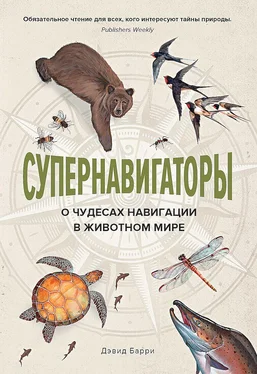
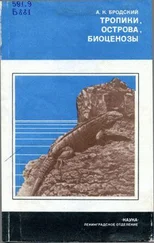
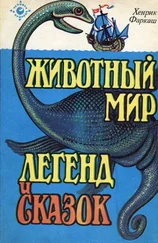
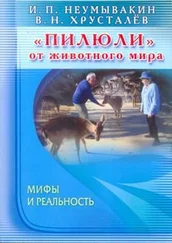

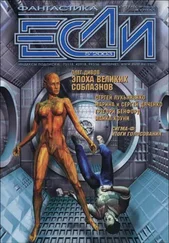

![Дэвид Барри - Супернавигаторы [О чудесах навигации в животном мире] [litres]](/books/393891/devid-barri-supernavigatory-o-chudesah-navigacii-v-thumb.webp)
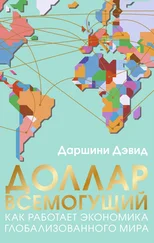
![Барри Пэйн - Новый Гулливер [Затерянные миры. Том XXIV]](/books/406917/barri-pejn-novyj-gulliver-zateryannye-miry-tom-xx-thumb.webp)

